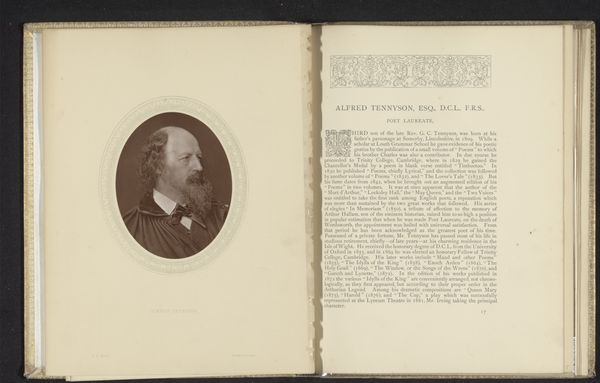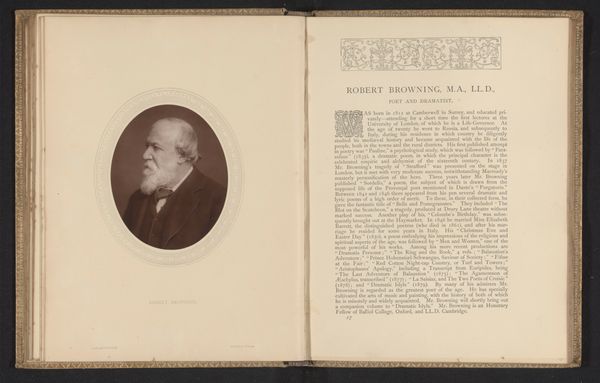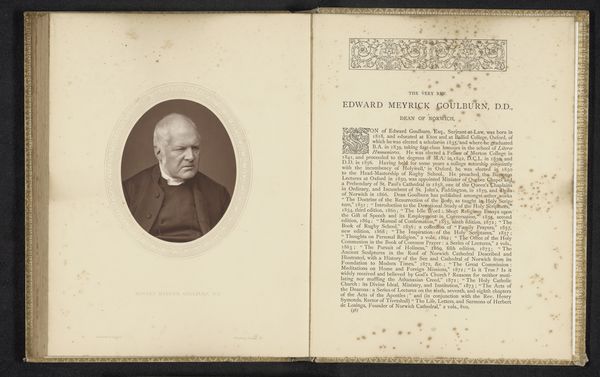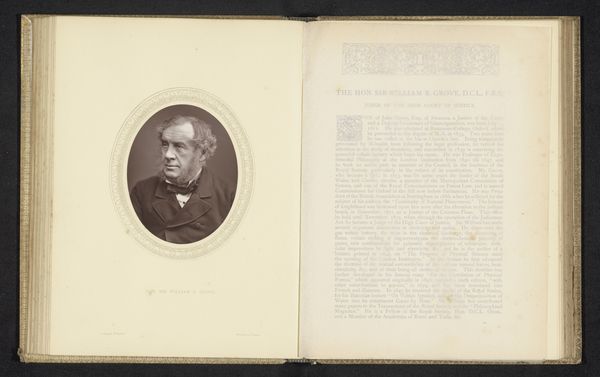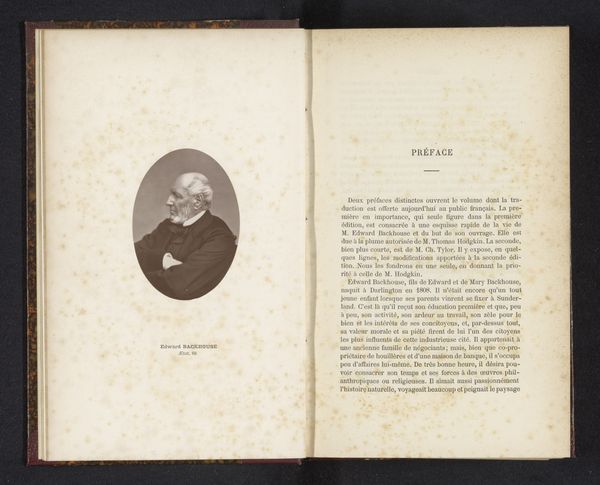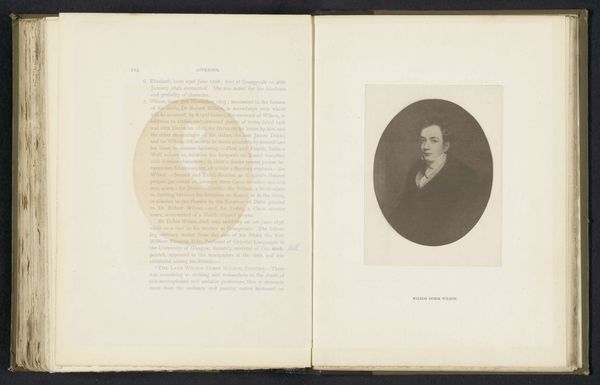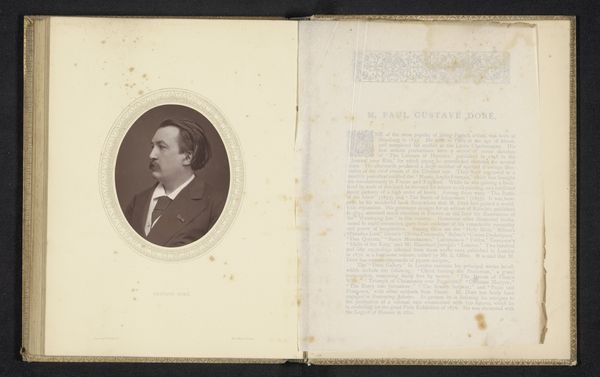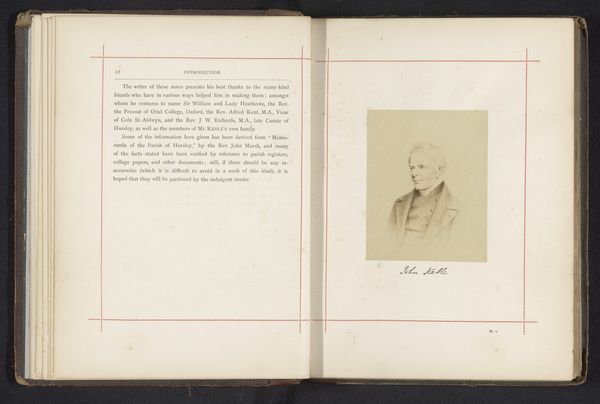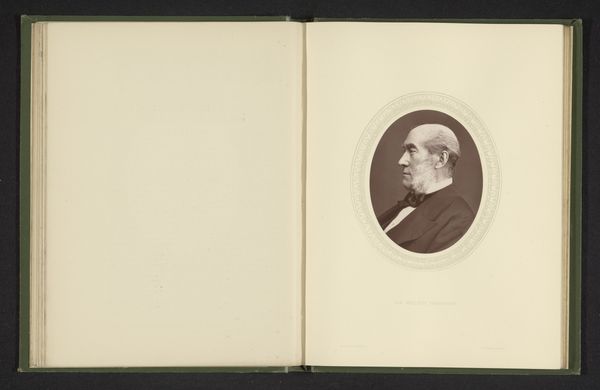
print, photography
#
portrait
# print
#
photography
Dimensions: height 111 mm, width 86 mm
Copyright: Rijks Museum: Open Domain
Curator: This print, titled “Portret van Jacob Bright,” dates back to before 1884 and it incorporates both photography and printing techniques. It gives us a glimpse into the visual culture of the time. What are your initial impressions? Editor: Immediately, I’m struck by the formality. The stark profile, framed so meticulously within the book—it speaks volumes about the constructed nature of public image, even in this ostensibly candid medium. There is such deliberate framing and arrangement of subject matter, not something we would relate so overtly to portraiture these days. Curator: It's a study in representation, isn't it? Jacob Bright, likely a significant figure considering he warranted a portrait, is carefully presented to his contemporaries, through media that blend industrial reproduction with more individualized attention, for the book medium. It signifies his role within the societal discourse of that era. Editor: Exactly. He's positioned within this oval frame like a cameo. He is literally enclosed and on display for viewers, to study and internalize. We need to recognize these choices not just as reflections of aesthetics but also indicators of power and authority dynamics. Curator: Bright was a British Liberal politician, serving as a Member of Parliament. This portrait likely appeared in a biographical volume, furthering his public role and solidifying his image for posterity. Editor: I agree; considering this, what statements are being made regarding how he is seen or needs to be seen? Was he seen to be statesmanlike, but was this his actual identity? I see these portraits not just as representations but rather as active contributors shaping and reshaping one's self image as they exist within society. Curator: By presenting the man in an accessible medium—a printed photograph—his ideas and values reach a much wider audience, intertwining his personal image with broader political aims. These pieces can operate as social objects beyond simply artistic ones. Editor: Thinking about it, art history benefits when it directly examines social history—gender roles, social norms and all; otherwise it could exist as an art-historical echo chamber. Thanks for illuminating Jacob Bright's presence in social, cultural and historical setting that defined Victorian politics of his day. Curator: Indeed. Studying such portraits lets us unpack how individuals navigated public life. It prompts us to reflect how images contribute to a larger historical narrative that spans beyond the individual portrayed. Editor: These nuances help us to critically assess how historical figures wanted to be perceived as part of something much larger that goes well beyond individual persona or intention.
Comments
No comments
Be the first to comment and join the conversation on the ultimate creative platform.
